How to Grow Grass from Seed
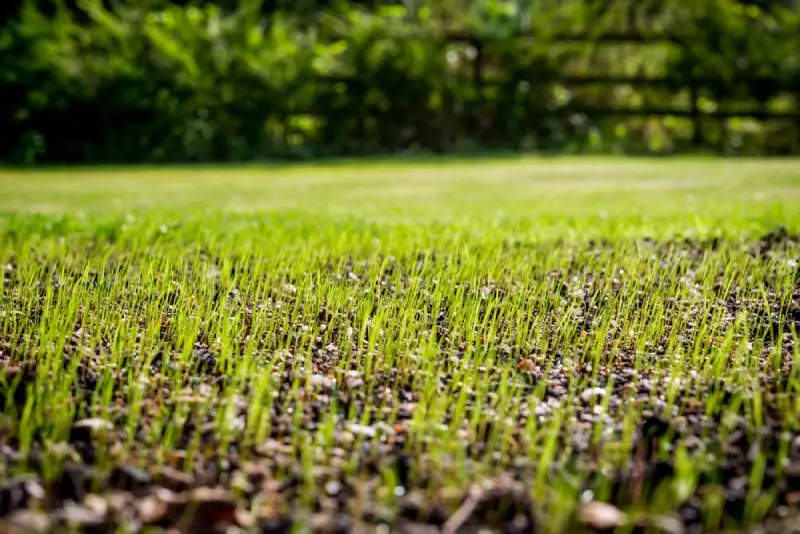
Whether you’re looking to revive a thin or spotty lawn or create more green space on your property, seeding a lawn is an effective, inexpensive way to do it. Planting grass seed is an excellent way to fill in bare spots or even create a completely new lawn from scratch. If you don’t know how to grow grass from seed, our lawn care experts are here to help. In this article from The Grounds Guys®, we’ll review how to seed a lawn, when to seed a lawn and provide other helpful tips to help you grow healthy, green grass from seed.
Pro Tip: We recommend seeding a lawn before or after summer for best results. Spring or fall are typically the best times of year to grow grass, depending on your region.
Table of Contents:
Choose the Right Grass Seed
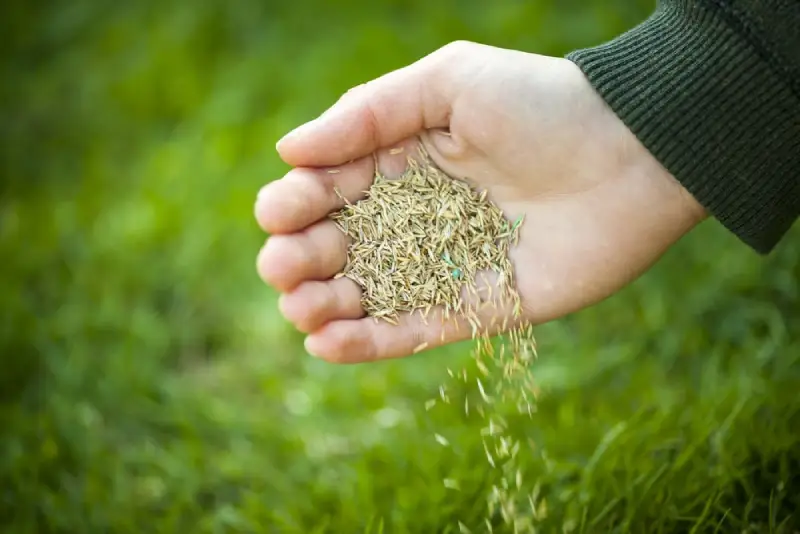
To ensure you achieve good results, choose the right grass seed type for your area. Here in Canada, cool-season grass seeds grow best in our climate. Cool-season grasses include perennial ryegrass, Kentucky bluegrass, and fescue. You can purchase grass seeds at your local plant nursery or a larger home and garden retailer. Consult with a trusted, local landscape professional if you need help choosing the right grass seed for your region. A pro will gladly point you in the right direction and can provide additional information on the different types of grass seed.
Once you have the right grass seed, gather the following supplies to help make seeding a lawn easier and more successful:
- A pH tester to test the soil and ensure you have the proper balance.
- A broadcast seeder to help apply the seeds in a shorter time.
- Fertilizer to help the grass seeds grow faster and healthier.
Prepare the Soil
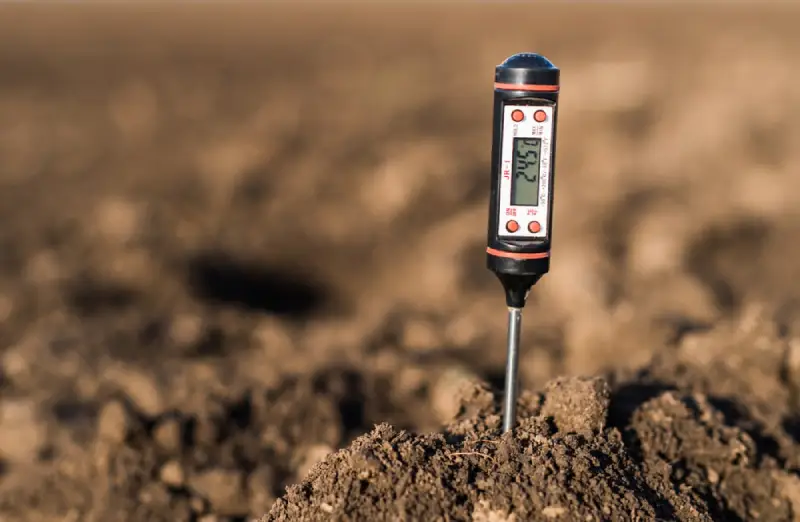
The next step in how to seed a lawn successfully is preparing the soil. To make it easier for the grass seed to take root, your soil should be loose. Check your soil to determine how compact it is. If the soil is loose, you should be able to easily poke a stick or your finger into it. If this is the case, you’re good to go. However, if your soil is compact you’ll need to loosen it up. Use a rake or a tiller and loosen the soil to a depth of about 10 centimeters. Loosening the ground allows air to flow and gives the grass seed an added boost to thrive.
Once the soil is loose, spread a thin layer of topsoil to help your grass seed thrive. Scattering topsoil helps level out the lawn and prevents puddle buildups during watering. Be sure to fill in any holes to avoid problems when the grass starts to grow. And save some topsoil for later on in the process.
If you’re seeding a lawn because it looks dead or doesn’t grow well, there may be some issues with the soil, which should be addressed before you attempt to plant new seed. Use a pH tester to determine the pH level of the soil. Ideally, the pH should be between 6.0 and 7.0. Anything less than 6.0 indicates that the soil is too acidic, which means it lacks nutrients like phosphorus, nitrogen, calcium, and potassium, so add some nutrient-rich fertilizer to help improve the pH balance. If the soil’s pH exceeds 7.0, apply fertilizer or add compost, sulfur, or peat to bring the pH level back down to an optimal range.
Sow the Seed
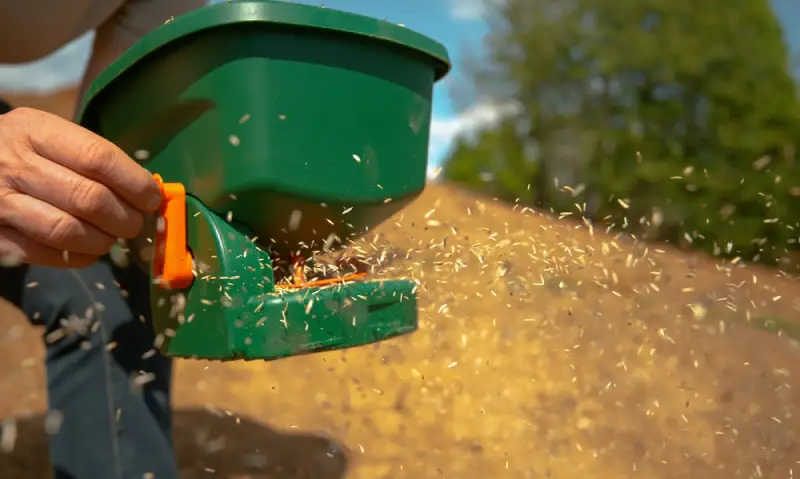
Now that you’ve prepared your soil for success, you can start seeding for your new lawn. Use a broadcast spreader (or your hands) to spread the seeds. When you’re spreading the seeds, you’ll want to apply them heavily, especially if you’re seeding an area that currently has no grass. It’s essential to spread the grass seed evenly over the entire area you want covered. If you’re seeding a lawn to cover up bare spots on your existing lawn, you can apply the new seed a little more sparingly.
Once the seeds are spread, you’ll want to work them into the soil or cover them up with a thin layer of soil to bury them. This is crucial because seeds can dry out quickly and are easily swept away by wind or water. Birds and small rodents may also take the opportunity for a free meal if seeds are left exposed. Once you’ve sowed the seeds, work them into the soil with a rake. New seeds should be at least 8 to 12 mm deep in the soil to ensure they get a good start. Then, smooth out the surface so the ground is fairly level and the lawn grows evenly.
Add fertilizer once the seeds are in the soil to accelerate their growth.
Watering and Nurturing the Seeds
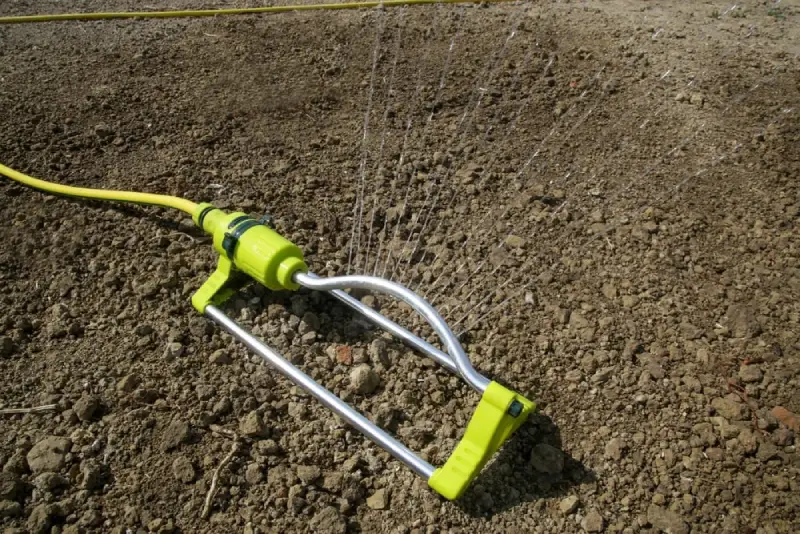
So, how long does grass seed take to grow? It can take anywhere from a few days to an entire month, depending on the type of grass, climate, and care received. For optimum growth, water daily to help the seeds germinate. Keeping the grass seeds moist will help them develop their root system so that you can enjoy a lush and healthy lawn.
Of course, it’s important not to overwater the new seedlings. Use just enough water to keep the soil moist at the seed depth. Remember, moist does not mean soggy.
Overwatering can be just as damaging to your new lawn as not watering enough. Too much water can cause the ground to shift and settle. New seeds can be washed away or become buried too deep in the soil (as the water evaporates) to receive the proper sunlight they need to grow. Too much water can also promote fungus growth, which can damage and kill emerging grass sprouts. Maintain a daily watering schedule for the first few weeks that keeps the soil moist, but not saturated. This will ensure your sprouting grass gets a great start.
Mowing and Maintenance
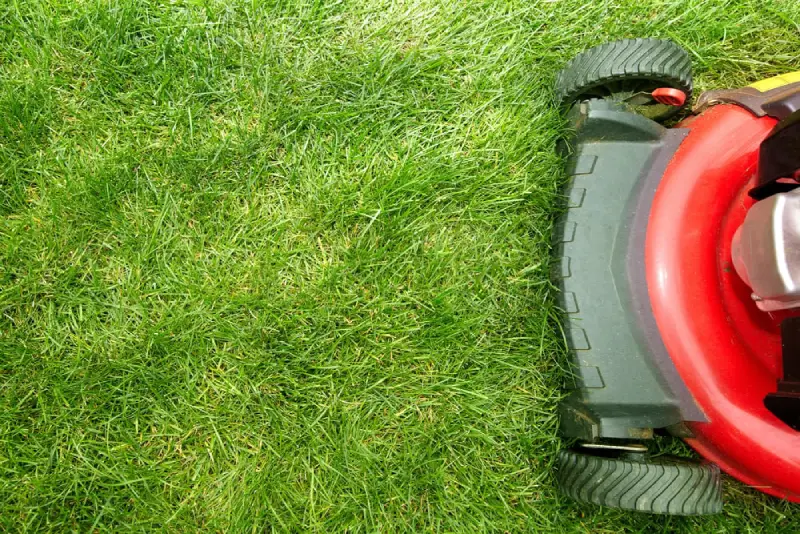
You can start mowing once the grass has reached a height good enough for mowing. The grass can take about eight weeks to grow to a mowing height. It’s a good idea to let it grow for a bit and never cut the grass too short. Cutting over ⅓ of the new grass height will stress it out.
Fertilization Weed Control
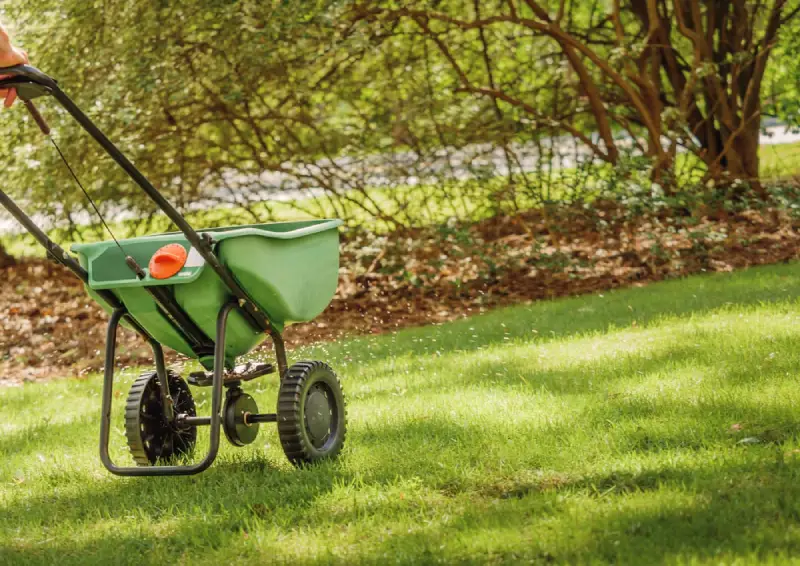
The last thing you want is for weeds to take over your new lawn. Weeds are in direct competition with your emerging lawn for water, nutrients, and sunlight. Fortunately, weeds don’t like nitrogen, so fertilizing your lawn with a nitrogen-rich fertilizer will help control weeds and give your new lawn the upper hand.
Protecting the Grass from Pests and Diseases

Don’t let pests and diseases ruin your lawn.
The following tips can help keep your grass free from pests and diseases:
- Maintain good soil health (including proper pH, nitrogen balance, and watering).
- Remove puddles of water. (Insects nest in standing bodies of water.)
- Set up barriers to keep pests out.
Enjoy Your Lush Lawn!
Knowing how to seed a lawn is just the beginning. To keep your lawn looking lush, healthy, and green you need to perform regular maintenance. Proper watering, fertilizing, and cutting are essential for a healthy lawn.
If you need help keeping your lawn looking its best, contact your local lawn care experts at The Grounds Guys®. We offer lawn care and landscape maintenance plans that will help your lawn thrive and keep your property looking its best all year round. We’re a part of the Neighbourly family of home service brands, which means all our work is backed by the Neighbourly Done Right Promise™, which ensures a high standard of excellence. We provide free estimates, so contact us today and let us help you grow and maintain a beautiful lawn.
 Click to call
Click to call


